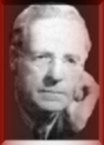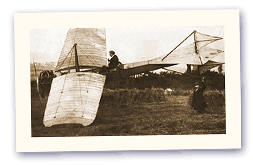
|
Harry Ferguson |
Harry Ferguson was founder of what was to become a worldwide tractor empire. He was a rare combination of engineer, businessman and visionary.
He has been given many descriptions in the past, including that of humanitarian, self-publicist, canny negotiator, disciplinarian, and above all, a brilliant inventor.
He was born in a village in County Down in 1884 and was a 15 year old's farmer's son when he saw his first car being driven on the roads of his native Northern Ireland.
Determined to work in engineering, when he left school he went to work with a brother who had a garage in Belfast, studied at night school, and before long had established his own garage business.
He gained publicity for his work with his daring exploits. At the age of 24 he built and flew his own plane after being inspired by Bleriot's channel flight in 1909. He was also a first-class motor racing driver.
By the time of World War One, he was a leading businessman, and was appointed by the government to review the efficiency of farm machinery and tractors in Ireland to ensure continued food production.
It was to inspire him to design his own lightweight tractor. The first models went into production in 1936 in Huddersfield. Then in 1938 he struck a deal with Henry Ford in the US, to produce Ferguson tractors though the Second World War. When Henry Ford retired after the war, a new board of directors cancelled the agreement, while continuing to produce the tractors.
Ferguson sued Ford and won $9.25m compensation in 1952, and he returned to Britain and came to Coventry, making Banner Lane his centre of tractor production in 1946. The first model off the line was the TE20, affectionately known as the "little grey Fergie".
The tractor empire flourished and merged with the Massey-Harris Company of Canada in 1953, becoming Massey Ferguson in 1958.
Ferguson meanwhile worked hard to develop a four-wheel drive system to maximise road holding and minimise skidding, but failed to make a commercial breakthrough. It took a while to catch on but is now common-place.
He retired to Abbotswold
near Stow-on-the-Wold in the Cotswolds.
He suffered from insomnia
and depression and, when he died from a drugs overdose
on 25 October 1960, a coroner's jury returned an
open verdict.
|
|
Supplying the world for 56 years
The first machines rolled off the production line at Coventry's Banner Lane (next door to Wickmans) plant in 1946.
In the opening year of operation, 315 TE20 tractors, known as little grey Fergies, were built at the plant. Previously the site had been used to build aircraft engines for war planes.
In 1957 the 315 TE20 tractor was updated and painted the trademark red and grey of Massey Ferguson tractors. A range of different models and other agricultural machinery such as combine harvesters started to be produced.
During the boom years of the 60's and 70's, the factory employed more than 5,000 people and thousands of tractors were being turned out. Banner Lane was one of the western world's largest tractor plants.
But the 80's saw a slowdown, accompanied by redundancies, short time working and industrial action.
During the 90's the company was taken over by American engineering giant Agco.
In recently years the company has been dogged by fluctuating order books, and occasionally periods of short-time working.
Scrooge-like, AGCO closed its Coventry factory at Xmas 2002. The decision ended nearly 60 years of tractor making in the city but still keeps its European administration headquarters at Banner Lane... surrounded by a nice piece of real estate that the old factory still stands on.
Throughout history there are many examples of great companies that started from nothing - that have deteriorated and/or gone under after the original founder died.
 The American tycoon
The American tycoon